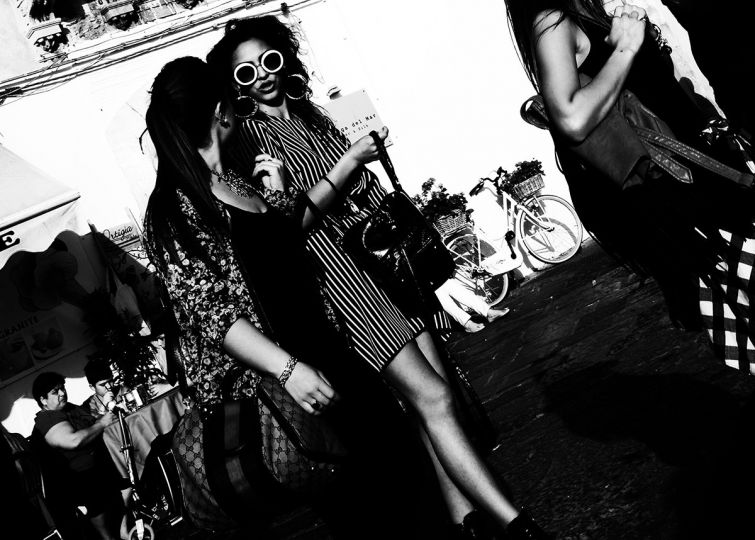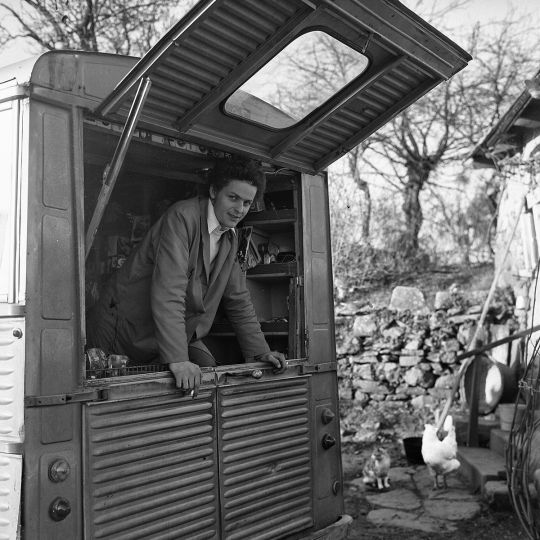How did the project manifest? What motivated you to start this project?
I have lived on and off now in Hong Kong since 1989. I watched the lead up to and witnessed the handover of Hong Kong from Britain to China in 1997. There were, and still are big questions and concerns about how mainland China will attempt to ‘influence’ the political landscape (one country two systems), stymie press freedoms and intimidate and quite often snatch and whisk people away who are deemed a thorn in China’s side. Chinese efforts to reach beyond the mainland to silence the country’s critics or their enablers, no matter where they are or what form that criticism takes is becoming widespread. People simply disappear.
I started to read about the workings of the Chinese secret service, the Ministry of State Security, and buzzwords that were coined to describe how they operated fired my imagination. Words for Chinese intelligence-gathering methods like “human-wave” or “mosaic” collection. They really piqued my interest. Also newspaper headlines in the South China Morning Post helped me get in the mood. ‘H.K. still active as spy hub of the east’, and ‘Arrest of ex-CIA agent fuels Hong Kong’s reputation as spy hot bed’.
What was the process behind the Red Corporation? Can you enlighten us about your picture taking process. The photographic process pertaining how the images evolved. What was it exactly you were looking for when you took to the streets? What kind of images were you looking for?
It’s important I mention ‘fired my imagination’, because The Red Corporation like another Hong Kong series I created called Neonopolis, fall into what I call my ‘quasi-fictional’ narratives. The ‘figment’ series. Projects that arise out of figments of my imagination. I simply let my imagination run wild and take to the streets. I slot these works into a link on my website called ‘quasi fiction’. The definition of quasi-fiction is a fictional story, written within the context of historical fact. So for example, Horatio Hornblower is a fictional Napoleonic Wars-era Royal Navy officer. The battle of Waterloo he finds himself in, is a historical fact. My interpretation of quasi-fiction within the context of The Red Corporation, is that I am creating a fictional narrative or espionage vibe from the streets of Hong Kong. The streets are the fact.
Now it’s important that I expand on the word ‘vibe’. Whether it sound cheesy or not I have decided to make ‘vibe’ a part of my artist statement. It goes something like this; ‘I call myself a ‘vibe’ photographer simply because I don’t attempt to cloak my projects in any sort of intellectual pretense. I don’t consider myself an intellectual so I don’t try intellectualize. I merely attempt to develop a ‘vibe’ or vibration or resonance that appeals to peoples emotions. I forge this resonance from the street. The ‘vibe’ is the narrative. Each project has it’s own unique tone, hue, mood, texture and vibe!
It might take some time before I begin to see the nuances of place = style = image = vibe. I like to let what I’m seeing and feeling decide the visual narrative/style of the pictures. Actually what I find fascinating is that it feels almost as if my camera dictates to me how this is going to emerge stylistically. Yes the ‘look’ almost has a life of its own. I don’t ‘try’ to force anything. And I don’t mean the story! Because as mentioned, a lot of what I do today is less about story and more about vibe. The vibe is the story, the narrative is the vibe. The construct of the picture and how I frame eventually becomes central to the way the series emerges photographically speaking. Somehow the cameras finds the frame and vibe for me. At least it seems that way to me. I find that a fascinating process. Hence my love for street photography.
Did you have any specific reference in mind while working on the series? What inspired you?
I’ve always loved spy books and films. The Bond series as a kid. And stories by the great Graham Greene, The Third Man, Our Man in Havanna, and of course the real life spy John Le Carre.
How would you like people to respond to The Red Corporation? What do you hope they will take away from it?
Possibly we all have a minds eye view of the espionage world. Certainly I do. I guess before I talk any further I would simply say that I want the viewers to feel a vibe I create within the imagery, a vibe that smacks of ambiguity and mystery. If I have achieved that, then I think I have achieved what I set out to do. I mean that’s all I can do, because it’s highly unlikely I will ever be able to probe or penetrate the clandestine world of MI5 or the CIA for example. Artists such as Trevor Paglen are trying. But even someone of Paglen’s immense talent and insight, a lot of what he does is based on inference. Nope in my humble capacity all I can do is forge fantasies from the street.
I have repeatedly watched the youtube video compiled by the Dubai police of the Mossad operation in Dubai to assassinate the Hamas leader, Mahmoud Al-Mabhouh. It’s fascinating simply because for the first time ever, an entire operation conducted by a highly secretive intelligence agency, the dreaded Mossad, was video recorded in great detail from start to finish. We get to see all the key players in the hit, how they looked, how they went about their craft. Without prior knowledge, if you stopped the footage at any juncture, you would have no idea from looking at the scene what was happening and who these people where. Such is the clandestine world. We don’t get to see it, even though we are surround by it. Yes that person on the bus beside me could be a spy, sleeper agent. We just don’t know. I find that rather fascinating.
There probably is a much greater intellectual way to explain why I do find this interesting, and what my work is ultimately about, but I haven’t the foggiest on how to explain, other than I go out and look, and let the street and the magic of place, light and subject create these ‘spycraft’ moments. As from a legal perspective, insinuating that a member of the public is a spook, I haven’t yet thought about the ramifications. Probably best I don’t. I keep the corresponding captions extremely vague to deflect any possible litigation. I know there are stringent privacy laws in place, certainly in Europe hobbling street photographer. Possibly the simplest explanation would be, I am a travel photographer, I go to Hong Kong and instead of photographing tourist attractions and other cliches I have some fun with some existential ideas. I am becoming increasingly interested in forging worlds out of worlds. Worlds of my imagination.
What would you say are your main interests as a photographer? Do you have a specific mental label for what you do? What motivates you?
To be honest I don’t think I have ever had a main interest as a photographer. I guess photography is my main interest. That is a blessing and a curse in some ways. As I have written in my artist statement, ‘I don’t seek or aspire to have an obvious style, or distinct voice embedded to my work. I don’t crave repetition of theme or idea hoping to make my work more discernible. Obviously mine! I prefer anonymity through my choice of idea, theme, practice and technique so that I can explore what I want, where I want, when I want and placate my desire to go make and take pictures, and in hindsight ‘attempt’ to create interesting or compelling work. Ultimately it is my wish to present you the viewer with the fruits of my labour, and encourage you to form your own opinions and draw your own conclusions.
As I will explain in your next question, I have dabbled in both the advertising and editorial worlds of photography. That has influenced how I worked. What I chose to photograph and the kind of equipment I used. I’ve been equally happy with a 4×5 plate camera as I have with a 35mm nikon.
What would you say have been the main influences on your photographic craft?
I have to open this question by stating that for my entire career I have swung like a pendulum between advertising and editorial photography. And this is important to mention because for better of for worse it has greatly influenced my approach to picture making and what subjects I have chosen to look at.
I began my photographic journey assisting advertising photographers in London. An introduction to photography that was for the most part about learning to create images to match an art directors schematic. A very different approach to the way photo journalists work. While an advertising photographer hires a team to produce his ‘vision’ which is an interpretation of the art directors vision, a photojournalist works alone, or at most with a writer and a fixer. They go flush out stories and visuals in real time. Images and words to please the photo editor back at the magazine. The advertising industry and the people who work in it are poles apart from the newspaper and journalism crowd. Very different breed indeed, and I for the most part wore two different hats. I would conceptualize and build images. Pull a bunch of things together to create an illusion of something. I’d shoot personal work with the adverting agency creatives in mind. Sort of mold my work into something that would appeal to that crowd. I was inspired by leading photographers within that industry. People like Erwin Olaf or the photographer I assisted, Duncan Sim.
Likewise I devoured the National Geographic magazine and aspired to shoot the kind of images they published. I lapped up the work of their regulars; William Albert Allard, Sam Abel, Maggie Steber to name a few. I wanted be one of the them. I saw photography as a way to give my travel ambitions some meaning. You know the refrain, ‘have camera will travel’! The Geographic was for me a symbol of adventure, freedom, there was a real sense of purpose. Story telling. There’s an educational aspect to this kind of work that appealed to me. I knew deep down the advertising world was selling for the most part, a crock of shit.
So my interests waxed and wained between the push and pull of these two worlds and now as I move towards my art career, I guess the work I am producing is a result of my ‘upbringing’ in the photographic world. Ultimately my abstract and pop art work is influenced by advertising. I am satisfying my love for destination and street photography thought my existential series and quasi-fiction.
Ultimately I strive for ‘strong’ images that are not simply about idea or technique, but a skillful blend of both. I certainly strive for perfect composition, as close to what I perceive to be perfect composition. My images need to be imbued with ‘style’ not in the fashion or advertising sense, but good to look at. Eye candy. Not in a sick sweet way. But in the competence of how I arrange the elements. How I seek out the light and texture and ambiance. I am after vibe!
My work has always been described as cinematic. I am not film buff and I don’t watch that many films, but when I do I get engrossed in the visual aspect of the film. I invariably lose track of the narrative/plot/dialogue, and in fact mostly when a film is finished I have absolutely no clue what the story was about. I just get lost in the nuances of the cinematography. Hence I remain faithful to stills and I don’t have any big film making ambitions. I like the fact that with a photograph you are given the time to get lost in thought. Given the time to study and think and reflect. A film is all about keeping up with the story and the directors vision. It’s too much for me. I like the simplicity of quiet contemplation. But I want my images to have that rich cinematic quality.
Who have been some of your favorite contemporary photographers? Those who are still working?
Goodness there are so many photographers, so much photography out there now, it’s hard to really say who my favorites are. Without wanting to sound arrogant or conceited I find much of what is out there rather uninteresting. Certainly compositionally and aesthetically. And even after reading a great artist statement, I then look at the pictures and feel overwhelmingly disappointed. I don’t study other photographers work much at all these days. The world is positively drowning in photographs. But there are some amazing photographers and without thinking too hard about them a few come to mind. Magnum photographer Harry Gruyeart is a master of light. In fact it’s ages since I looked over his images, he is a subconscious choice. Then I look again for this article and there he is. I don’t think Harry has ever shot something I don’t like. He’s brilliant. His images are ‘complete’ to my mind. He is a master of light and composition, mood and temp.
Although I’m not a black and white photographer I do like what Alex Majoli is doing with his recent incarnation of ‘scene’. He’s onto something quite profound in what he is producing and how he is producing it. I enjoy looking at Gregory Crewdson’s rural America angst street work. One magazine opens with the headline, ‘Telling the story: photographer Gregory Crewdson manufactures perfection’. I think that to my mind is the reason why although I like what he is doing, I ask myself, why set it up to ‘mimic’ life. Go out and find it in reality. Why does everything have to me ‘constructed’ to be regarded as art? Street photography is having a tough time selling itself as art for the most part. And that has to change. Majoli is doing great for that very reason.
















